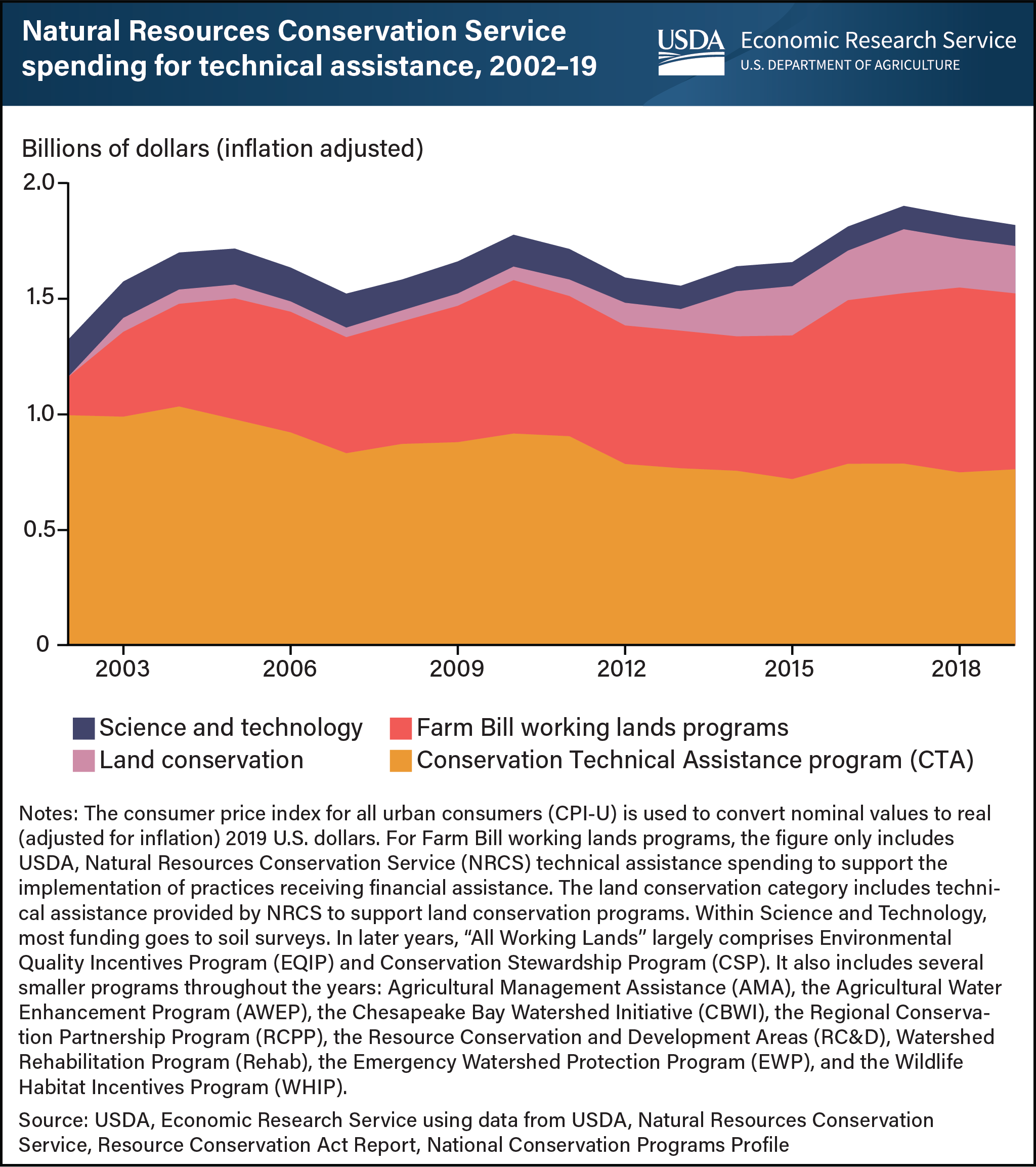From 2002 to 2019, Natural Resources Conservation Service (NRCS) spending increased for technical assistance to support Farm Bill program implementation
- by Andrew B. Rosenberg and Steven Wallander
- 6/6/2022

Conservation technical assistance is a service that helps producers develop skills and knowledge for maintaining the natural resources involved in agricultural production. USDA’s Natural Resources Conservation Service (NRCS) provides technical assistance through several different programs. The Conservation Technical Assistance (CTA) program provides comprehensive planning services and technical support for the adoption of conservation practices across the agricultural landscape. NRCS also provides free technical assistance to producers and landowners participating in working lands programs such as the Environmental Quality Incentives Program (EQIP) that primarily provide financial assistance for practice adoption. Similarly, NRCS provides technical support for participants in land conservation programs, which provide financial payments to producers and landowners that put land into long-term conservation, such as the Conservation Reserve Program (CRP). Finally, NRCS administers several science and technology programs, among which the largest amount of funding goes to soil surveys. Spending for the CTA program has decreased in the studied period (2002-2019) by 23 percent, once adjusted for inflation. On the other hand, spending on technical assistance in support of working lands programs that primarily provide financial assistance has increased over the period from $163 million to $761 million. Spending on technical assistance for land conservation has increased, and spending on science and technology has decreased over the same period. This chart was drawn from the USDA, Economic Research Service report USDA Conservation Technical Assistance and Within-Field Resource Concerns, published May 2022.

